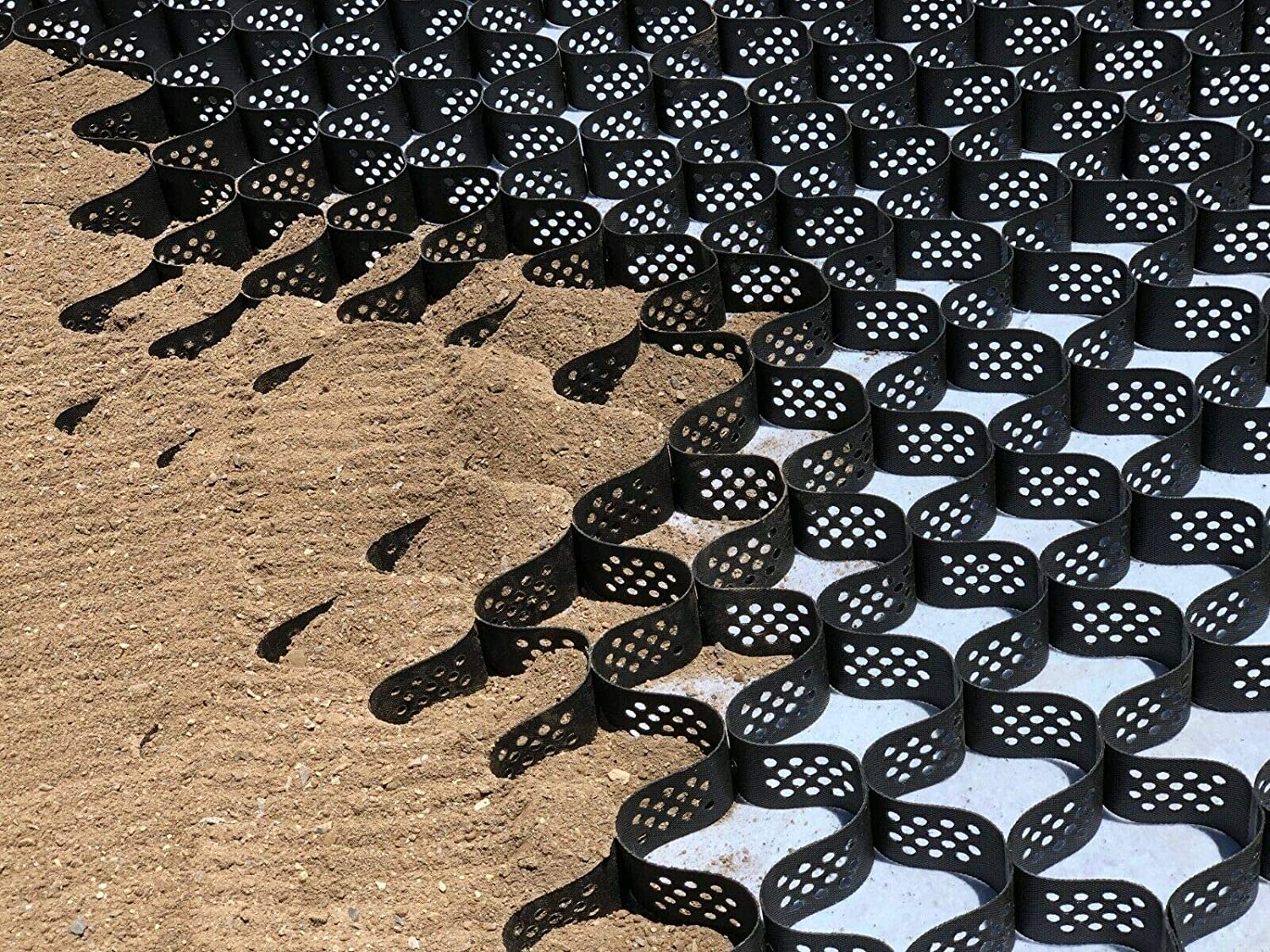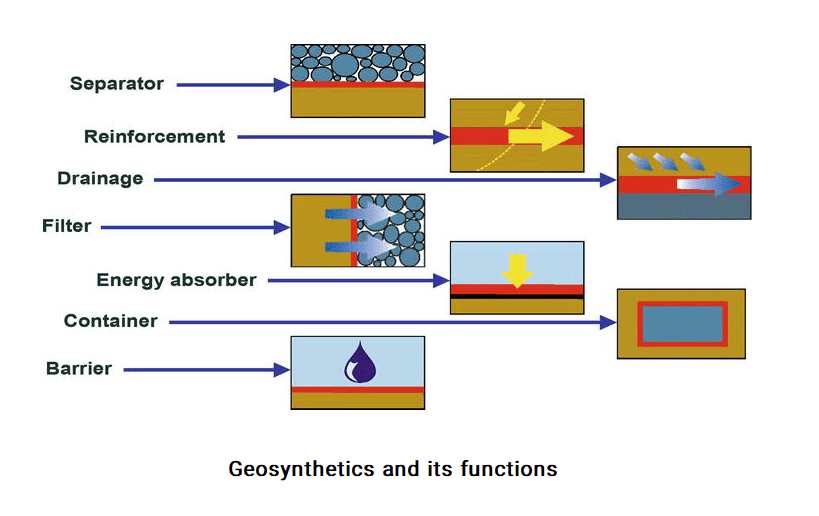
Regardless of the type of material, all geosynthetics provide at least one of the following five major functions. Understanding the differences in these related, but separate, functions is essential to selecting the right one for the job. The majority of the geosynthetics on the market today offer more than one function in one package. This streamlines the project planning process by reducing the number of products required to coordinate. Contrast and compare the five main functions of modern geosynthetics to decide which features to prioritize for your soil stabilization project.

Filtration
Unlike other methods, geosynthetics provide filtration for water passing through the soil in both directions. Rainfall that seeps downward through the soil tends to carry along many chemicals and other contaminants, especially on farms, around manufacturing facilities, and next to roadways. Geotextiles and geocomposites are the two geosynthetics most widely used for this purpose. Clay impregnated grids are also used since the bentonite layer can serve as a filter if it’s thin enough to still allow some water to seep through. The filtration function is primarily designed to prevent soil loss, making it essential for erosion control. Water is allowed to flow into the ground without carrying along any valuable minerals or unwanted additions mixed in. It’s also a good option where contamination is a concern with nearby surface waters or ground water supplies. Landfills rely on permanent leachate systems built around filtering geosynthetics to contain every drop of wastewater.
Separation
Separation is the most common use for geosynthetics since it’s essential for roadway construction. Without layers of geomembranes and geotextiles to keep various materials from making direct contact, roadways would quickly spread and crack from the constant downward forces pressing them together. Geocomposites, geotextiles, geomembranes, geocells, and even geofoams are used to accomplish this goal. Materials that offer separation also tend to work well for reinforcing and improving drainage of soils as well. This means you’ll find a wide range of uses for separating geosynthetics on construction and roadway projects. Agricultural and manufacturing sites also benefit from separation membranes that isolate layers of soil that might shift if allowed to blend with another layer.
Reinforcement
Many of the same geotextiles and grids used to separate soil layers also provide powerful reinforcement features. This is particularly common on slopes and areas where water passes over the surface of exposed soil. Geogrids and nets may allow for drainage as well, but they’re primarily used for reinforcement thanks to the increased amount of contact with individual soil particles. Reinforcement grids and membranes are also needed under roadways that will experience heavy loads over time, to prevent splitting and spreading forces from ruining the surface. Don’t forget about reinforcement geosynthetics for the banks and sides of holding ponds and other liquid containment areas. Since so many uses for geosynthetics involve reinforcement or strengthening weak soils, it’s not surprising that this function is shared by so many different materials.
Containment
Containment is similar to separation, but this function goes a step farther to contain liquids and gases, in addition to soil particles. Geomembranes are the primary method used for containment, followed by geocomposites and geosynthetic clay liners. In areas where filtration isn’t enough to protect the soil and water from contamination, containment is the primary, preferred function instead. You can also find this geosynthetic function described as the barrier method. The material used for this process must offer a high level of impermeability. Permeable materials allow water and other liquids to seep through, but liners and other geomembranes can keep even gases under control. These barriers block both incoming and outgoing water from moving through a soil surface. Containment methods are often required for farms, manufacturing facilities, mines, and other potential sources of hazardous waste.
Drainage
When you need water to absorb into the soil below, without causing erosion or flooding, consider a drainage geosynthetic. Thin layers of geotextiles and geosynthetic clay liners allow water to slowly seep through in a controlled fashion. If the natural soil doesn’t have the pore capacity for steady absorption, flooding and pooling occurs and creates extensive erosion problems. Drainage geosynthetics encourage a better penetration rate, reducing water standing on the surface of the ground during a heavy rainfall event. Drainage installations are generally found around roadways, along the edges of slopes, and at the bases of retaining walls.